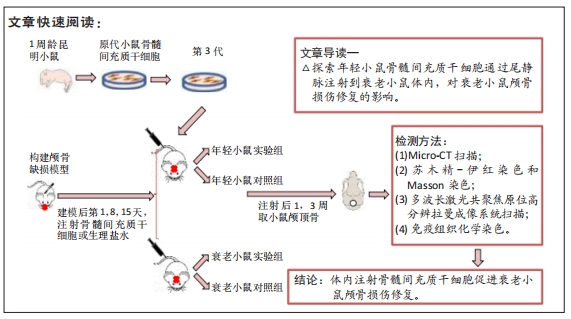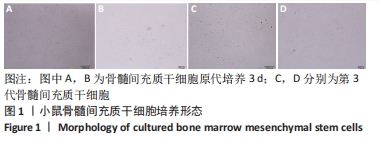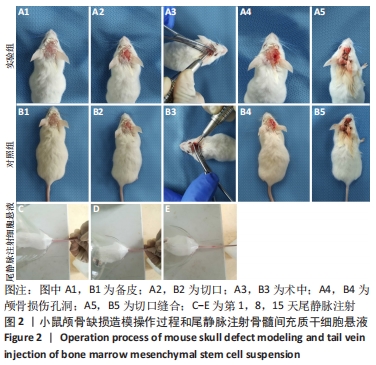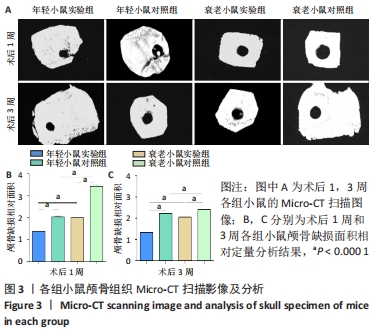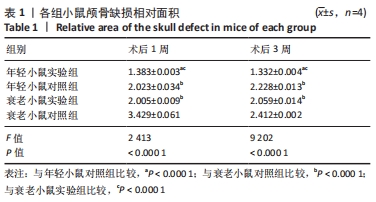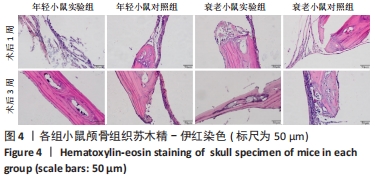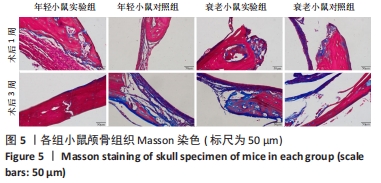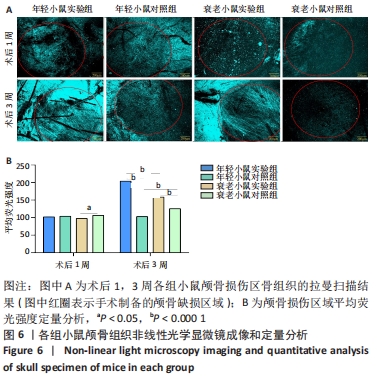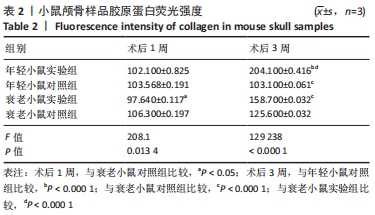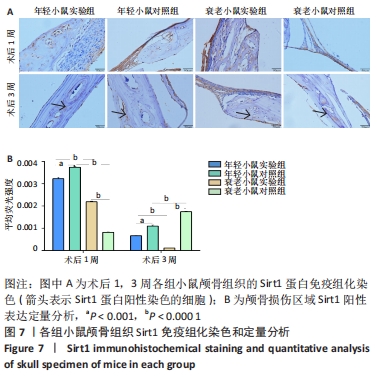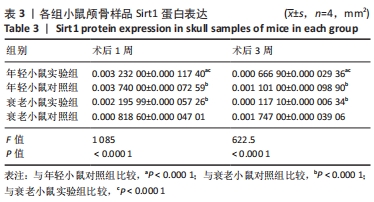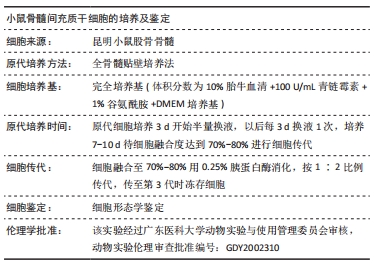[1] APOSTU D, LUCACIU O, MESTER A, et al. Cannabinoids and bone regeneration. Drug Metab Rev. 2019;51(1):65-75.
[2] PERIĆ KAČAREVIĆ Ž, RIDER P, ALKILDANI S, et al. An introduction to bone tissue engineering. Int J Artif Organs. 2020;43(2):69-86.
[3] LEE J, BYUN H, MADHURAKKAT PERIKAMANA SK, et al. Current Advances in Immunomodulatory Biomaterials for Bone Regeneration. Adv Healthc Mater. 2019;8(4):e1801106.
[4] LIN H, SOHN J, SHEN H, et al. Bone marrow mesenchymal stem cells: Aging and tissue engineering applications to enhance bone healing. Biomaterials. 2019;203:96-110.
[5] GIBON E, LU L, GOODMAN SB. Aging, inflammation, stem cells, and bone healing. Stem Cell Res Ther. 2016;7:44.
[6] RIZZOLI R, REGINSTER JY, BOONEN S, et al. Adverse reactions and drug-drug interactions in the management of women with postmenopausal osteoporosis. Calcif Tissue Int. 2011;89(2):91-104.
[7] ROZMAN C, FELIU E, BERGA L, et al. Age-related variations of fat tissue fraction in normal human bone marrow depend both on size and number of adipocytes: a stereological study. Exp Hematol. 1989;17(1):34-37.
[8] BUNPETCH V, ZHANG ZY, ZHANG X, et al. Strategies for MSC expansion and MSC-based microtissue for bone regeneration. Biomaterials. 2019;196:67-79.
[9] PAJARINEN J, LIN T, GIBON E, et al. Mesenchymal stem cell-macrophage crosstalk and bone healing. Biomaterials. 2019;196:80-89.
[10] HORWITZ EM, PROCKOP DJ, GORDON PL, et al. Clinical responses to bone marrow transplantation in children with severe osteogenesis imperfecta. Blood. 2001;97(5):1227-1231.
[11] LI P, MA X, JIN W, et al. Effects of local injection and intravenous injection of allogeneic bone marrow mesenchymal stem cells on the structure and function of damaged anal sphincter in rats. J Tissue Eng Regen Med. 2020;14(7):989-1000.
[12] HAO C, WANG Y, SHAO L, et al. Local Injection of Bone Mesenchymal Stem Cells and Fibrin Glue Promotes the Repair of Bone Atrophic Nonunion In Vivo. Adv Ther. 2016;33(5):824-833.
[13] ZHANG R, MA J, HAN J, et al. Mesenchymal stem cell related therapies for cartilage lesions and osteoarthritis. Am J Transl Res. 2019;11(10):6275-6289.
[14] MAJIDINIA M, SADEGHPOUR A, YOUSEFI B. The roles of signaling pathways in bone repair and regeneration. J Cell Physiol. 2018;233(4):2937-2948.
[15] O’BRIEN FJ. Biomaterials & scaffolds for tissue engineering. Materials Today. 2011;14(3):88-95.
[16] WANG MO, VORWALD CE, DREHER ML, et al. Evaluating 3D-printed biomaterials as scaffolds for vascularized bone tissue engineering. Adv Mater. 2015;27(1):138-144.
[17] SHICK TM, KADIR AZA,NGADIMAN NHA,et al.A review of biomaterials scaffold fabrication in additive manufacturing for tissue engineering. J Bioact Compat Polym. 2019;34(6):415-435.
[18] REN X, FENG Y, GUO J, et al. Surface modification and endothelialization of biomaterials as potential scaffolds for vascular tissue engineering applications. Chem Soc Rev. 2015;44(15):5680-5742.
[19] BARBA A, MAAZOUZ Y, DIEZ-ESCUDERO A, et al. Osteogenesis by foamed and 3D-printed nanostructured calcium phosphate scaffolds: Effect of pore architecture. Acta Biomater. 2018;79:135-147.
[20] BOEHM AV, MEININGER S, TESCH A, et al. The Mechanical Properties of Biocompatible Apatite Bone Cement Reinforced with Chemically Activated Carbon Fibers. Materials (Basel). 2018;11(2):192.
[21] CHEN Y, LIU X, LIU R, et al. Zero-order controlled release of BMP2-derived peptide P24 from the chitosan scaffold by chemical grafting modification technique for promotion of osteogenesis in vitro and enhancement of bone repair in vivo. Theranostics. 2017;7(5):1072-1087.
[22] 庄传记,陈文昭,江新民.骨形态发生蛋白9复合胶原基骨修复材料体外成骨性能与体内修复骨缺损[J].中国组织工程研究,2021,25(10): 1489-1494.
[23] DA COSTA JP, VITORINO R, SILVA GM, et al. A synopsis on aging-Theories, mechanisms and future prospects. Ageing Res Rev. 2016;29:90-112.
[24] OTSUKA K, MURAKAMI S, KUBO Y, et al. Chronomics for chronoastrobiology with immediate spin-offs for life quality and longevity. Biomed Pharmacother. 2003;57 Suppl 1:1s-18s.
[25] WANG Z, SHI Y, CHEN W, et al. Mesenchymal stem cells repair bone marrow damage of aging rats and regulate autophagy and aging genes. Cell Biochem Funct. 2020;38(6):792-800.
[26] GOODELL MA, RANDO TA. Stem cells and healthy aging. Science. 2015; 350(6265):1199-1204.
[27] WANG MJ, CHEN J, CHEN F, et al. Rejuvenating Strategies of Tissue-specific Stem Cells for Healthy Aging. Aging Dis. 2019;10(4):871-882.
[28] OSUGI M, KATAGIRI W, YOSHIMI R, et al. Conditioned media from mesenchymal stem cells enhanced bone regeneration in rat calvarial bone defects. Tissue Eng Part A. 2012;18(13-14):1479-1489.
[29] 袁宇,徐林.骨髓间充质干细胞联合3D生物打印技术治疗骨缺损的研究进展[J].中国医学物理学杂志,2021,38(1):110-126.
[30] 刘相杰,宋科官.生物支架材料及间充质干细胞在骨组织工程中的研究与应用[J].中国组织工程研究,2018,22(10):1618-1624.
[31] DHIVYA S, KESHAV NARAYAN A, Logith Kumar R, et al. Proliferation and differentiation of mesenchymal stem cells on scaffolds containing chitosan, calcium polyphosphate and pigeonite for bone tissue engineering. Cell Prolif. 2018;51(1):e12408.
[32] CHEN W, LIU J, MANUCHEHRABADI N, et al. Umbilical cord and bone marrow mesenchymal stem cell seeding on macroporous calcium phosphate for bone regeneration in rat cranial defects. Biomaterials. 2013;34(38):9917-9925.
[33] HANG HL, XIA Q. Role of BMSCs in liver regeneration and metastasis after hepatectomy. World J Gastroenterol. 2014;20(1):126-132.
[34] 魏琴,张雪,马磊,等.血小板衍生生长因子BB诱导大鼠骨髓间充质干细胞向成骨细胞分化[J].中国组织工程研究,2021,25(19):2953-2957.
[35] 姜涛,吴硕,李志强,等.血小板衍生生长因子BB促进SD大鼠骨髓间充质干细胞的增殖[J].中国组织工程研究,2021,25(13):1976-1981.
[36] LI X, WANG Y, AN G, et al. Bone marrow mesenchymal stem cells attenuate silica-induced pulmonary fibrosis via paracrine mechanisms. Toxicol Lett. 2017;270:96-107.
[37] TSAI MJ, TSAI SK, HU BR, et al. Recovery of neurological function of ischemic stroke by application of conditioned medium of bone marrow mesenchymal stem cells derived from normal and cerebral ischemia rats. J Biomed Sci. 2014;21(1):5.
[38] Sun W, Qiao W, Zhou B, et al. Overexpression of Sirt1 in mesenchymal stem cells protects against bone loss in mice by FOXO3a deacetylation and oxidative stress inhibition. Metabolism. 2018;88:61-71.
[39] LIU J, WANG H, REN W, et al. β-mercaptoethanol promotes osteogenesis of human mesenchymal stem cells via sirt1-ERK pathway. Cytotechnology. 2020;72(5):695-706.
[40] YANG X, JIANG T, WANG Y, et al. The Role and Mechanism of SIRT1 in Resveratrol-regulated Osteoblast Autophagy in Osteoporosis Rats. Sci Rep. 2019;9(1):18424.
[41] JIANG Y, LUO W, WANG B, et al. Resveratrol promotes osteogenesis via activating SIRT1/FoxO1 pathway in osteoporosis mice. Life Sci. 2020;246: 117422.
[42] 王娜,陈乃耀. SIRT1影响间充质干细胞骨修复的研究进展[J].基础医学与临床,2014,34(12):1714-1717.
|
